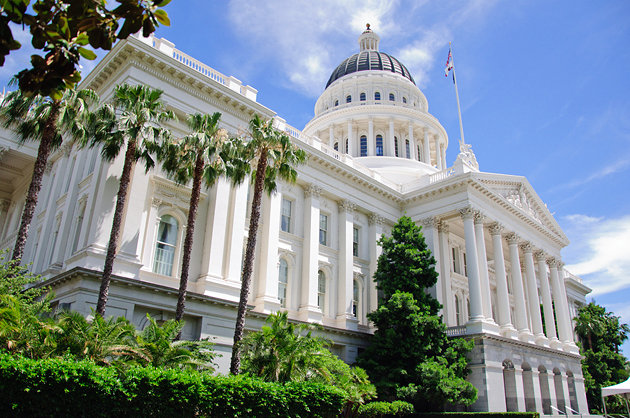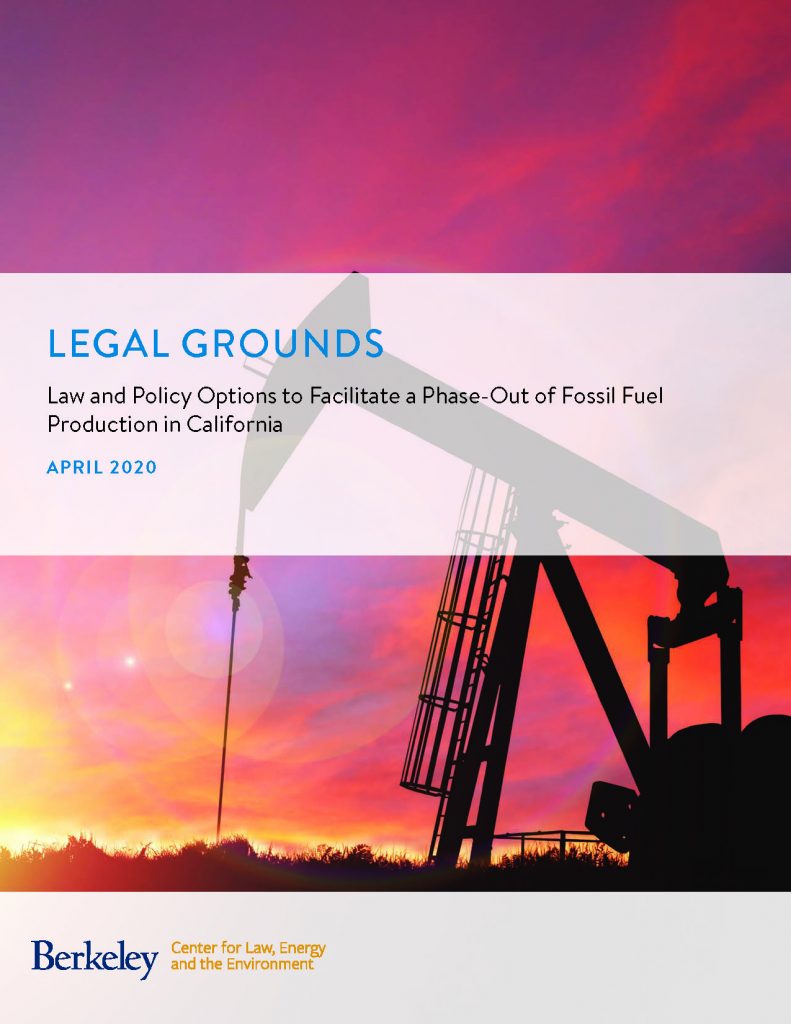Californians would greatly benefit from fast, electrified high speed rail. But the system currently under construction is badly behind schedule and lacks funding to finish. It’s a warning to the rest of the country about our ability to build big, climate-friendly infrastructure.
Vox.com produced a video describing the challenges, featuring some words from yours truly:

On tonight’s State of the Bay, I go from host to guest, as we get into the nuts and bolts of what the California Environmental Quality Act (CEQA), a law that temporarily blocked admissions to UC Berkeley this year, does and how it operates. My co-host Grace Won will interview yours truly to explain how the law works in practice, as well as prospects for reform.
We’ll also learn more about Governor Newsom’s proposed gasoline rebate for Californians facing high prices at the pump. Joining us to discuss will be Alexei Koseff, reporter for Cal Matters.
Finally, we’ll hear from Marian Sousa and Marian Wynn, who are among the last of the Bay Area’s Rosie the Riveters.
What would you like to ask our guests? Post a comment here, tweet us @StateofBay, send an email to stateofthebay@kalw.org or leave a voicemail at (415) 580-0718.
Tune in tonight at 6pm PT on KALW 91.7 FM in the San Francisco Bay Area or stream live. You can also call 866-798-TALK with questions during the show.

It’s a double-shot of shows on KALW 91.7 FM today, my last two of the year. First, this morning on Your Call’s One Planet Series at 10am PT, we’ll discuss how climate science is being politicized in schools with investigative journalist Katie Worth, author of the riveting new book, Miseducation: How Climate Change Is Taught in America.
In the second half of the show, we’ll cover the mental health impacts of air pollution with reporter Kristina Marusic.
Then tonight at 6pm PT, I’ll be co-hosting State of the Bay to assess recent decisions rejecting or delaying housing projects by the San Francisco Board of Supervisors. UC Davis Professor of Law Chris Elmendorf will help us understand the statewide legal implications of these anti-housing decisions, in particular the recent delay of a 500-unit housing development near BART.
Then we’ll discuss the state of the Bay Area’s “slow streets” movement, which close streets to most traffic for improved pedestrian and bike safety. What do you think about these measures? Ask our guests Eillie Anzilotti of the SFMTA and community planner Leah Chambers.
Finally, you’ll hear my interview with with Phil Ginsburg, General Manager of the San Francisco Recreation and Parks Department, who will discuss some of the holiday festivities available in the city’s public spaces.
Tune in at 91.7 FM in the San Francisco Bay Area or stream live at 10am PT for Your Call and then again at 6pm PT for State of the Bay. What comments or questions do you have for these guests? Call 866-798-TALK to join the conversation!

Earlier this month, Governor Newsom signed two significant housing bills — one to end single-unit zoning in urban areas across California and one to allow local governments to upzone parcels near transit to up to 10 units. These new laws could start to make a dent in the state’s multi-million unit housing shortage. But how much?
First and foremost, SB 9 (Atkins) would allow homeowners to convert their house into a duplex, or split their lot and build two units on each lot, allowing up to four units per original parcel — all with streamlined local approval. In short, it ends single-unit zoning in urbanized and transit-rich areas across the state.
For context, the state has roughly 7.5 million single-unit-zoned parcels, and nearly two-thirds of residential land in the state is reserved exclusively for this type of single-unit zoning.
I recently hosted David Garcia from UC Berkeley’s Terner Center on Housing Innovation on KALW’s Your Call to discuss the bill, and his center found that SB 9 could enable the creation of over 700,000 new homes that would otherwise not be market feasible. Given that some estimates peg the state’s housing shortage at 3.5 million, an additional 700,000 units would be a sizeable contribution.
Yet these changes won’t happen overnight. Property owners would need to decide to convert their homes or split their lots, a process which could take years to unfold statewide. Still, given the history of racial exclusion associated with single-unit zoning, coupled with the need to boost housing anywhere we can, and especially in high-income, transit-rich communities, this bill is a welcome step in the right direction.
The second bill, SB 10 (Wiener), is a voluntary opt-in for local governments wishing to rezone parcels for up to 10 units of housing near transit. It allows them to do so without undergoing environmental review.
This bill is less likely to have a big impact on housing production, simply because many local governments and their homeowner constituents are hostile to new apartment buildings. However, as the state tightens the requirements for local governments to provide housing for residents of all incomes, they may be forced to invoke this provision. And in the meantime, local governments that do want to see more dense development (and have the market conditions to enable it) will be able to utilize this law.
Notably, wealthy anti-development interests are already challenging this bill. The Los Angeles-based AIDS Healthcare Foundation, run by a longtime development opponent with personal beef against the author of SB 9, filed a lawsuit claiming that the new law is unconstitutional, because it allows local governments to override voter-approved initiatives restricting development with a supermajority vote. The nonprofit Planning and Conservation League also opposed the bill on similar grounds.
Given the statewide importance of housing production, this lawsuit is unlikely to succeed. But homeowners from some of the wealthiest communities around the state are also mobilizing to place before the voters a constitutional amendment restricting what state policy makers can do to boost housing over local objections.
The ballot measure is also unlikely to succeed given the pro-housing politics of the electorate (many of whom are renters and housing insecure). But it’s yet another example of wealthy interests fighting to preserve the exclusivity of their neighborhoods and maintain their inflated property values, at the expense of the less fortunate.
In the meantime, the real work to boost housing across the state will continue in the legislature. That means more legislation to allow apartment buildings near transit (particularly in high-income areas), streamlining approvals for infill projects, and reducing the overall cost of housing construction.
But for now, 2021 was definitely a year of progress on the housing front, with much more to be done.
President Biden campaigned on a goal of net-zero greenhouse gas emissions for the United States by 2050. But this goal will only be achievable by deploying technologies and practices that pull greenhouse gases from the atmosphere and securely store it underground.

California can pioneer one type of technology that could make this national goal feasible, as a new Capitol Weekly op-ed I co-authored with Berkeley Law’s climate fellow Katie Segal argues. Specifically, engineered carbon removal can capture carbon emissions from the air or smokestacks of industrial facilities that have few viable alternatives and inject the carbon underground or in long-lived products like concrete.
The op-ed offers key policy needs for decision-makers to consider, based on a UC Berkeley/UCLA Law report we issued on this subject in December. As with so many other climate-fighting technologies, California once again has the chance to lead on this next generation of sequestration tools — if we seize the opportunity to do so.
If you’re interested in the past, present and future of rail transit in Los Angeles, check out the video above from my talk this week with Streets For All. My moderated comments begin about 20 minutes in. We covered everything from the dismantling of the Los Angeles streetcar network to delays building current rail lines to whether anyone alive today will ever get to ride high speed rail.
And if you don’t know Streets For All, they’re a volunteer-based organization advocating for equitable redesign of streets and the transportation network to favor transit, walking and biking, as a climate change and quality-of-life necessity in Los Angeles.
Consider becoming a member if you’re interested in these issues. I thank them for hosting me for this talk!
California law under SB 100 (De León, 2018) requires that our electricity system run on 100% carbon-free power by 2045. That means a significant deployment of energy storage resources, like batteries, to capture surplus renewable power from the sun and wind for dispatch during dark and windless times.
While passing this law was a milestone, actually achieving this target will require siting and permitting major clean energy facilities. And perhaps no better land is appropriate for these facilities than at existing fossil fuel plants. These plants are on already-industrialized land with access to transmission lines. Converting them to energy storage facilities is a double-win: it offers a phase out of fossil fuels, while improving the air quality (and often the aesthetics) of the surrounding area.
So that’s why it’s frustrating to see one such proposed conversion to battery storage — the Moss Landing power plant battery energy storage project — potentially held up for months now by local opposition. The Monterey County Planning Commission will consider the project at its July 29th hearing.

The proposed project involves a 1,200-megawatt (MW) battery energy storage system, fit into the existing industrial footprint of the Moss Landing power plant in four two-story buildings, along with associated infrastructure (substations and inverters/converters). It will also replace existing lattice transmission towers with monopoles (staff report available here).
Most importantly, the goal of the project is to store renewable energy from the sun and wind to help California decarbonize its electricity grid. For this reason, Pacific Gas & Electric (PG&E, the local utility) selected the project and brought it to the California Public Utilities Commission for approval, with a condition that the project reach commercial operation by July 18, 2021 (PG&E advice letter here).
But a good proposal to support needed climate policy is not always enough in California. Permitting any industrial project comes with challenges and opposition, most notably compliance with environmental review under the California Environmental Quality Act (CEQA).
In this case, a review of the project under CEQA by the county revealed no significant impacts on the myriad study areas, including air quality, biological resources, water, traffic, cultural resources, and others; provided the developer implement appropriate mitigation measures. However, the developer ended up going beyond the county’s recommendations by committing to a dialogue process to identify additional mitigation measures to protect migratory birds. In short, the developer agreed to go above and beyond what CEQA requires.
Furthermore, in collaborating with the National Audubon Society and Monterey Audubon, the developer agreed not to include new transmission poles and high-voltage wires until after 2020, at which point they will conduct final design in consultation with those nonprofits. The company further committed to addressing bird safety issues in that process, including consideration of undergrounding high-voltage transmission wires.
Ultimately, the clean energy nature of the project, the county’s preparation of an environmental review document that follows CEQA, and this additional commitment to address bird safety issues were enough to gain the support of Audubon and the Sierra Club. The project appeared to face relatively easy sailing to a permit, but the planning commission delayed considering it at its July 8th meeting so that the environmental review document could be revised to clarify transmission wire placement associated with the project. Hopefully, the commission approves the project on July 29th, and no one appeals it to the Monterey County Board of Supervisors.
If California can’t allow relatively straightforward permitting of energy storage facilities at existing power plants with minimal anticipated impacts, where can they go? Not only will clean tech companies shy away from investing in California, potentially driving up costs from lack of competition, but these eyesore power plants may take longer to decommission. In the case of Moss Landing, the power plant has 500-foot dual smokestacks visible through Monterey Bay, a source of visual blight and air pollution in an otherwise unique marine and coastal environment. This battery storage project could help facilitate this decommissioning sooner rather than later, while embodying precisely the critical energy storage deployment California needs to achieve a decarbonized future.

Interested in learning about policy options to phase out California’s oil and gas production? Join me and Ted Lamm today at 11am Pacific Time as we present findings from the new CLEE report Legal Grounds. We will discuss the background of oil and gas production in California and key law and policy opportunities to begin a phase-out in order to meet climate and environmental goals.
Also joining us on the webinar will be:
- Ann Alexander
Senior Attorney, Dirty Energy, Lands Division, Nature Program
Natural Resources Defense Council - Ingrid Brostrom
Assistant Director
Center on Race, Poverty & the Environment - Sean B. Hecht
Co-Executive Director, Emmett Institute on Climate Change and the Environment
UCLA School of Law

California is the seventh-largest oil producing state in the country, with a fossil fuel industry that is responsible for billions of dollars in state and local revenue and other economic activity each year. Yet continued oil and gas production contrasts with the state’s aggressive climate mitigation policies, while creating significant air and water pollution, particularly for disadvantaged communities in areas where much of the state’s drilling occurs.
As a result of these risks, many advocates and policymakers seek ways to enhance regulation of and eventually phase out oil and gas production in California. Recent global price wars and declining demand from the COVID-19 pandemic have underscored the need to conduct this phase-out in a just and orderly fashion.
To provide legal options for policy makers to facilitate this transition, Berkeley Law’s Center for Law, Energy and the Environment (CLEE) is today releasing the new report “Legal Grounds: Law and Policy Options to Facilitate a Phase-Out of Fossil Fuel Production in California,” co-authored with CLEE climate law and policy fellow Ted Lamm.
The report analyzes steps California leaders could pursue on state- and privately-owned lands to achieve this reduction. Among the options discussed, state leaders could:
- Enhance regulatory authority over drilling by clarifying the need for the California Geologic Energy Management Division (the state’s primary oil and gas regulator) to prioritize environmental and climate impacts over production;
- Heighten scrutiny on permitting via comprehensive environmental review with mandatory, site-specific mitigation measures under the California Environmental Quality Act (CEQA);
- Institute minimum statewide drilling setbacks of at least 2,500 feet or more from sensitive sites, such as schools, parks, and houses;
- Implement a per-barrel or per-well severance tax and dedicate the revenue to projects that further the goal of transitioning away from fossil fuel; and
- Task the California Air Resources Board with devising and implementing a comprehensive plan for a phase-out of all in-state oil and gas production by a date that tracks with overall climate goals.
To learn more about the report findings, please join our free webinar on Tuesday, May 12th, from 11am to noon, with Sean Hecht of UCLA Law and Ingrid Brostrom of the Center on Race, Poverty & the Environment. Registration is here.
This report ultimately comes at a unique moment in the history of in-state oil and gas production. The industry is struggling economically due to a global collapse in oil prices and a decrease in demand from COVID-19-related shutdowns. As sheltering Americans temporarily buy less gas and many drilling companies are approaching or entering bankruptcy with record-low oil prices, an intelligently structured phase-out could result in less harm to jobs and local economies. And California’s actions could demonstrate to other states and countries how to successfully sunset their fossil fuel production.
We hope the menu of law and policy options presented in Legal Grounds will assist state leaders in addressing these challenges and charting a new course for California’s in-state fossil fuel production.

Sen. Scott Wiener is back trying to boost California housing production again, after his SB 50 legislation to upzone for apartments around transit died in the State Senate in January. This time, he’s proposing a “lighter touch” approach, salvaging an SB 50 provision that would end single-family zoning across the state.
Senate Bill 902 would authorize minimum residential zoning of duplexes in unincorporated county areas or cities under 10,000 residents. Triplexes would be the minimum density for cities between 10,000 and 50,000 residents, while fourplexes would be allowed for cities of 50,000 or more.
Furthermore, while local standards on height, setbacks, and fees, etc. would remain in place, any approval for these multiplexes would be “by right,” meaning environmental review would not apply under the California Environmental Quality Act (CEQA) and permits would not be discretionary. In addition, the bill would not apply to parcels with renters any time in the last seven years, historic structures, or high-fire zones.
But wait, there’s more — and this time with a more explicit transit and environmental hook.
SB 902 would also allow local governments the option of rezoning any parcel (including for commercial uses) for up to 10 units in density, provided the parcel is located in a “transit-rich area, a jobs-rich area, or an urban infill site.” The definition of transit-rich means within one-half mile of any rail station or major bus stop, and urban infill site essentially means a previously developed spot surrounded by existing uses on at least 3 or 4 sides. “Jobs-rich” would need to be defined by the state’s planning and housing agencies. Like the multiplex provision, all permitting for these 10-unit parcels would be by-right and therefore not subject to CEQA.
This 10-unit opt-in provision holds the most promise to boost transit ridership and reduce vehicle miles traveled (aka “traffic”), the reason the state is now falling behind on transportation emissions. By allowing an opt-in for greater density, SB 902 provides off-the-shelf tools for local governments that actually want to see more housing near transit and jobs.
That said, the problem in California is that too many transit-rich, high-income local communities want nothing to do with more density. So many of the most critical transit-rich communities (San Francisco Bay Area suburbs and Westside Los Angeles cities like Beverly Hills) likely won’t budge on this tool. Their property-rich residents are just fine with their neighborhoods as they are.
The upside for the environment on the multiplex provision is that accommodating more residents in existing residential neighborhoods could also boost transit, if those new multiplexes are near rail stations and bus stops. And if those new residents drive, at least they would presumably have a shorter commute than if they lived in new exurban sprawl communities (the primary affordable housing alternative, short of leaving the state altogether).
The potential downside is that many of these multiplexes might be in far-flung subdivisions, meaning the new residents will have longer commutes than if SB 50 had passed and they could have lived in an apartment near transit. But the SB 50 opportunity, and all the mandatory affordable housing that would have come with it, is now passed.
As for the politics on SB 902, it seems likely it will be similar to SB 50. Wealthy suburbanites that sank SB 50 will be back en masse to oppose SB 902. Labor may not like the by-right provision (they use CEQA to force project labor agreements on developers) but may appreciate the construction jobs.
The political wildcard will be equity and affordable housing groups, which helped sink SB 50. Will they care about suburban upzoning? Some of these affected areas will have low-income tenants. While as mentioned the bill doesn’t allow redevelopment with renters present anytime in the last seven years, many tenant advocates may not care. Some are even hostile to market-rate development of any type, hoping instead for a government takeover of housing production. So it will be critical to see what positions they take on SB 902, as their opposition to SB 50 provided important political cover for wealthy opponents.
In addition, will environmental groups step up to support the measure? Most were MIA on SB 50, with the exception of NRDC, ClimateResolve and a few others. Some were even opposed, cowed by the tenant group opposition or beholden to NIMBY constituents. So SB 902 gives them a fresh opportunity to finally develop a coherent position on this most pressing environmental issue.
Ultimately, if Sen. Wiener can at least limit tenant group opposition, along with the wealthy NIMBYs who may be more scandalized by the prospect of an apartment building than a triplex, he may have a chance to get the bill passed. And ultimately, it will require the governor, who campaigned on 3.5 million new housing units but has instead seen backwards progress, to step up and get more involved in the political process.
Either way, if the bill has legs, we’ll likely see many changes as it winds its way through the process of political compromise. I’ll be following them closely.


